Engeneering Science 10- Energy, Work and Power
1/31
There's no tags or description
Looks like no tags are added yet.
Name | Mastery | Learn | Test | Matching | Spaced |
|---|
No study sessions yet.
32 Terms
Energy
Energy is the ability or capacity to do work It is a scalar quantity and can be changed from one type to another. Energy conserved in a closed system: the total amount of energy of all types is always the same (principle of conservation of energy)
Forms of energy: kinetic energy (of moving objects), potential energy (of gravitational field, electric and magnetic fields) and a combination of both
The SI unit of energy is joule (J)

Work
Work, W is energy transferred to or from an object via a force, F acting on the object
Energy transferred to the object is positive work and the energy transferred from the object is negative work
Ø To do work on an object, energy must be transferred
Ø Throwing a baseball does work
Ø Pushing an immovable wall does not do work!
Work Done by a Force
W = F ⋅ d = Fd cosφ
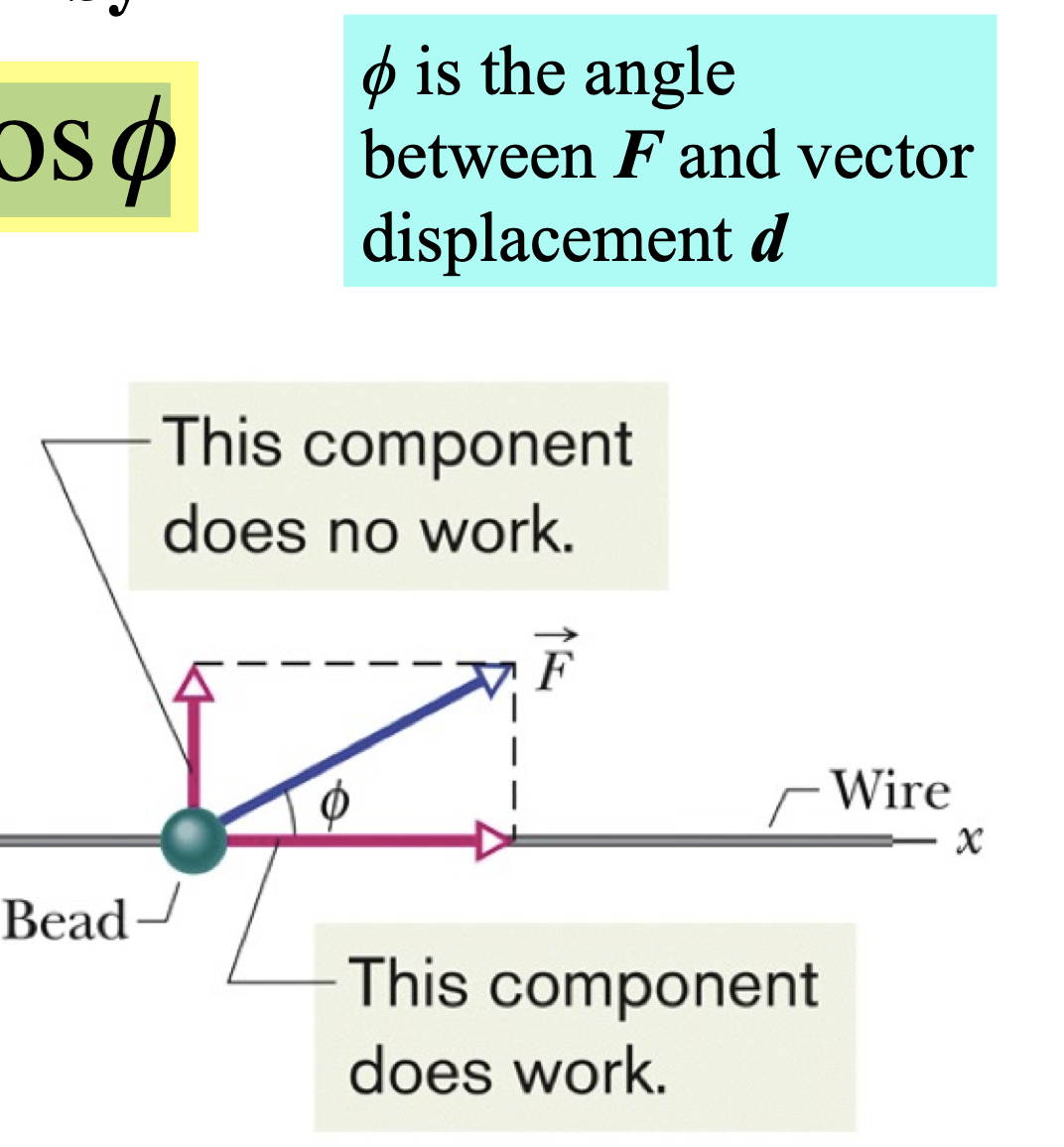
Work Done by a Force
The force does positive work when it has a vector component along the displacement, it does negative work when it has a component in the opposite direction. It does zero work when it has no such vector component
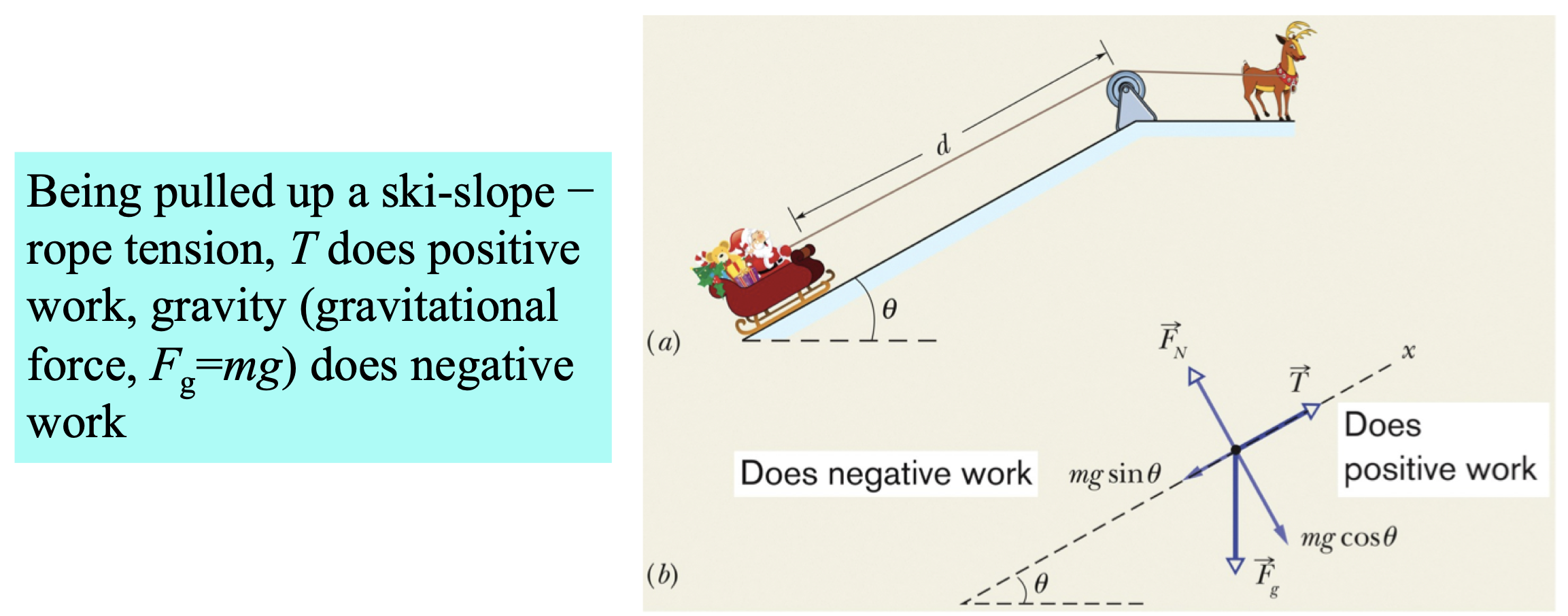
Work-Kinetic Energy Theorem
The change in the kinetic energy ΔK is equal to the net work W=Fd done on it by the force

Work Done by the Gravitational Force
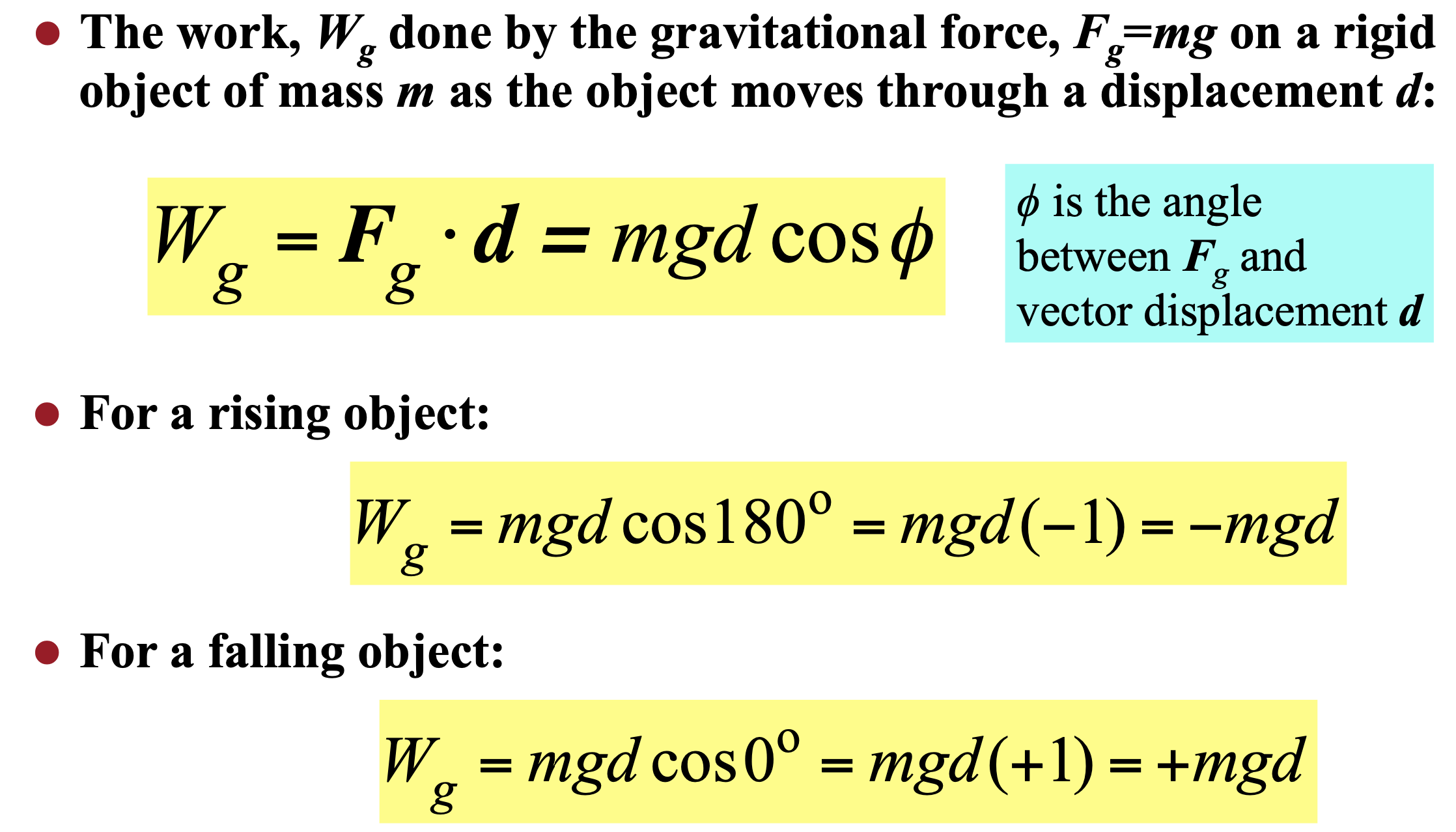
Work Done in Lifting and Lowering an Object
During the upward displacement, the applied force does positive work Wa on the object
At the same time gravitational force does negative work Wg on it
During lifting, the applied force tends to transfer energy to the object while the gravitational force tends to transfer energy from it.

Work Done in Lifting and Lowering an Object
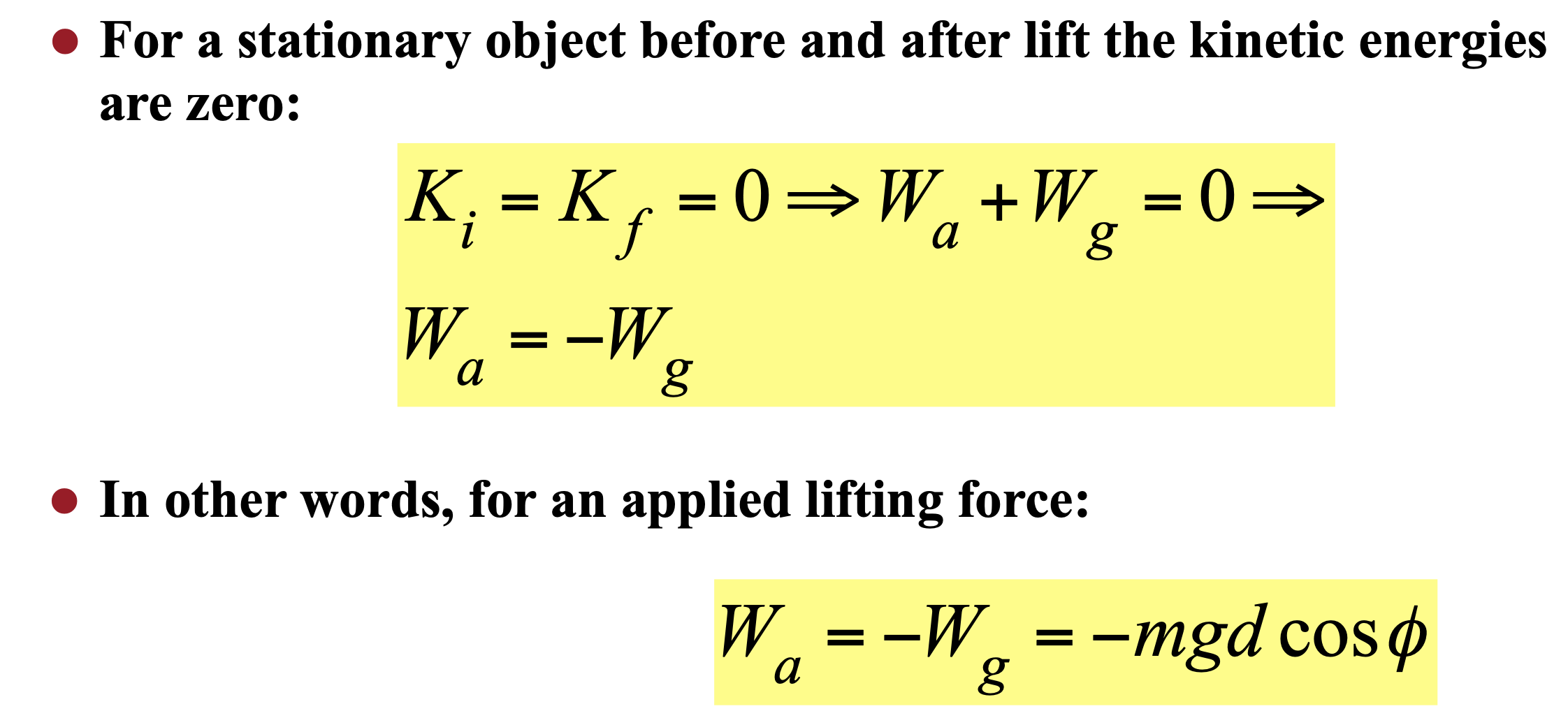
A passenger being lowered down in an elevator
Tension, T does negative work, gravity does positive work
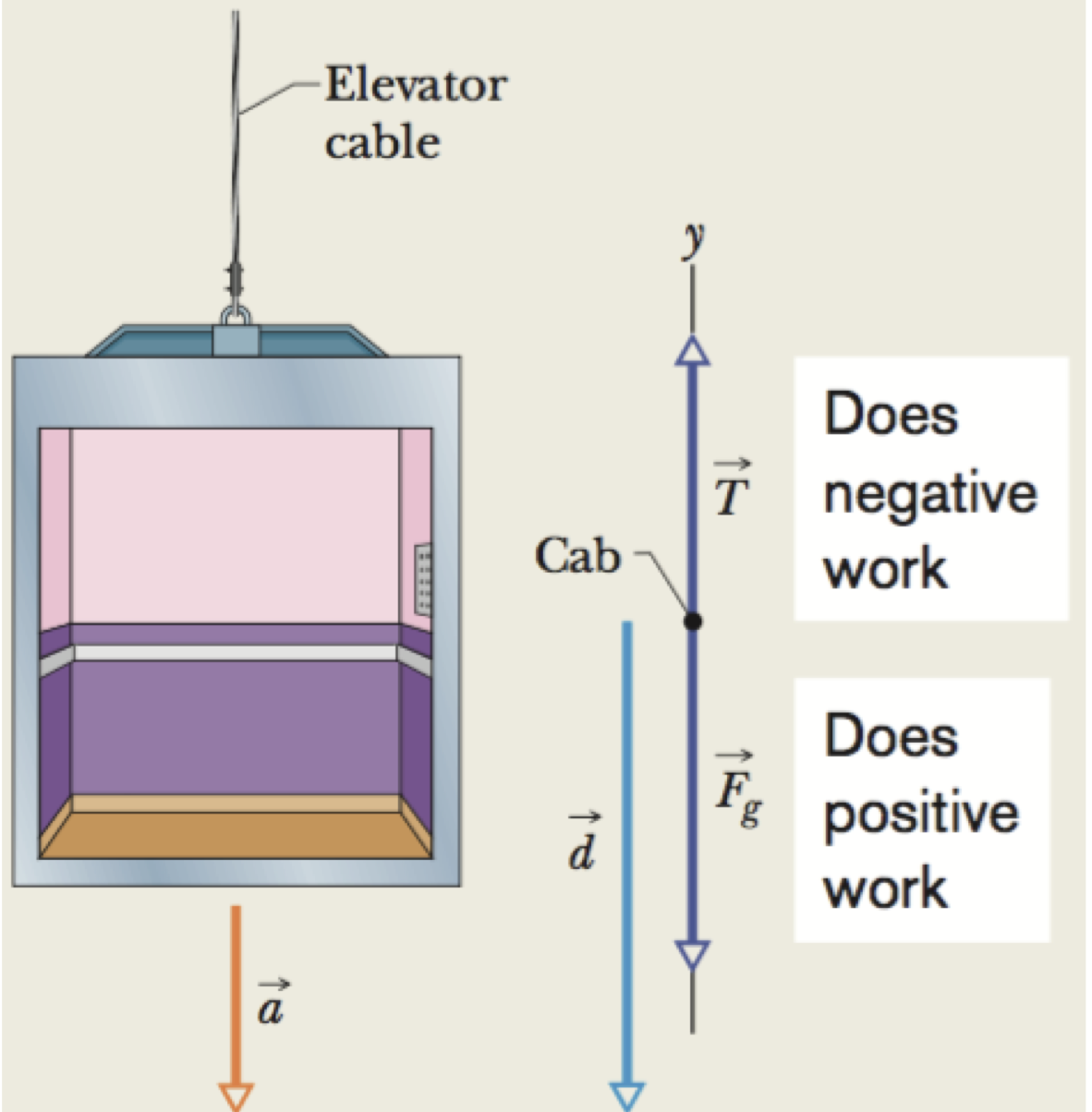
Work Done by a Spring Force
A spring force, Fs is the variable force from a spring
(a) Spring in its relaxed state
(b) The block is displaced by d, and the spring is stretched by a positive amount x. Note the restoring force, Fs exerted by the spring
(c) The spring is compressed by a negative amount x. Again, note the restoring force
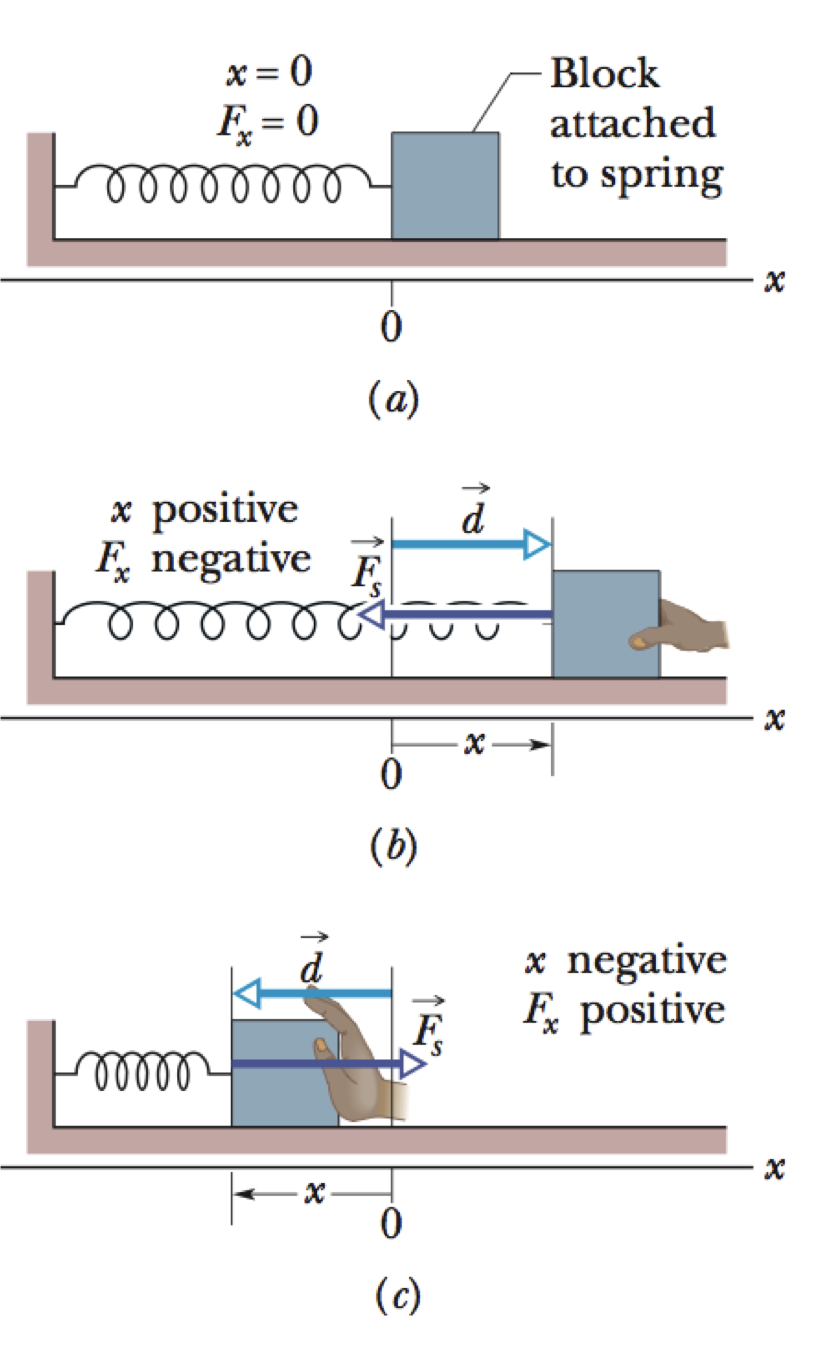
Work Done by a Spring Force − Hooke's Law
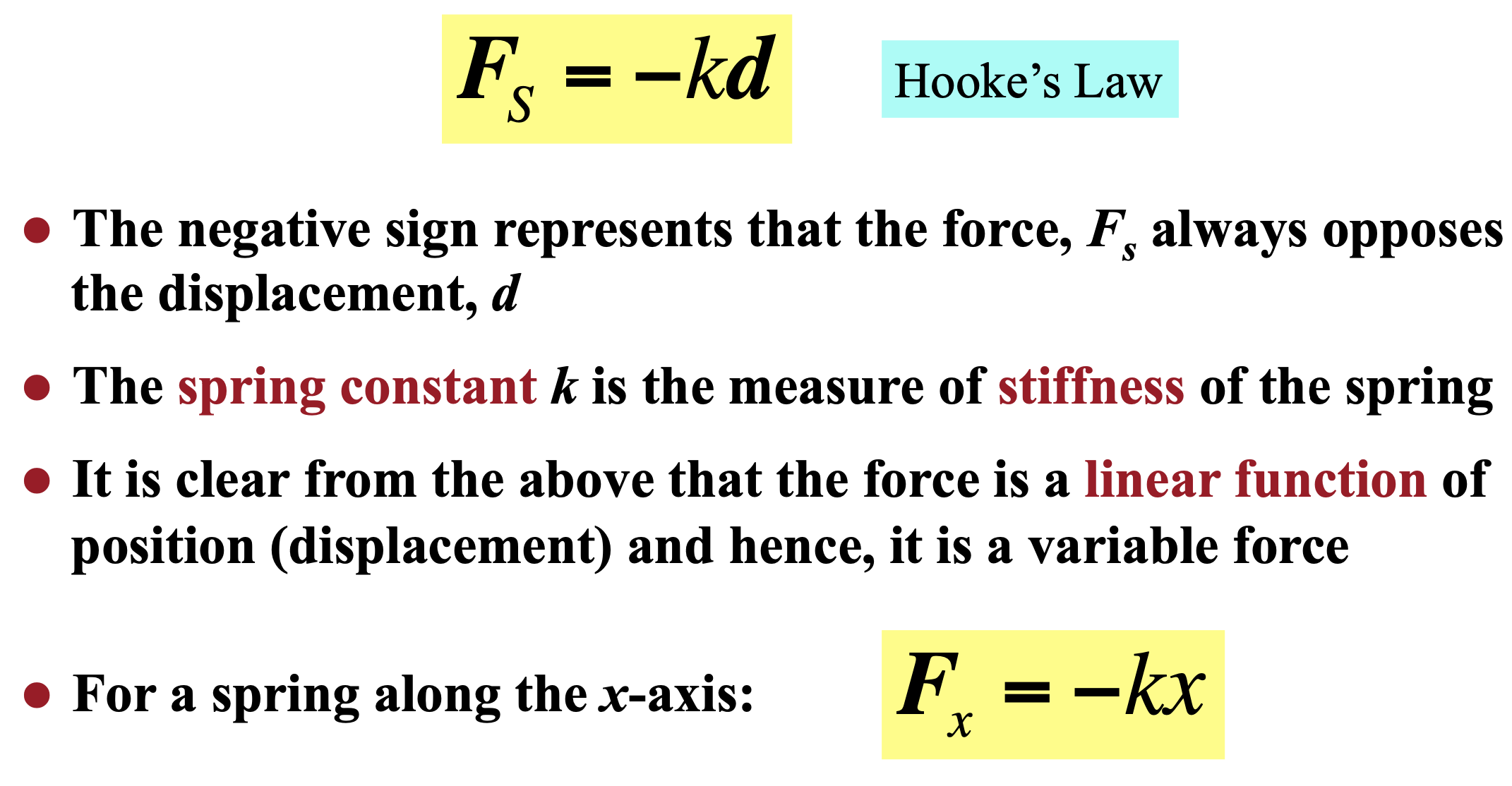
Work, Ws done by a spring force
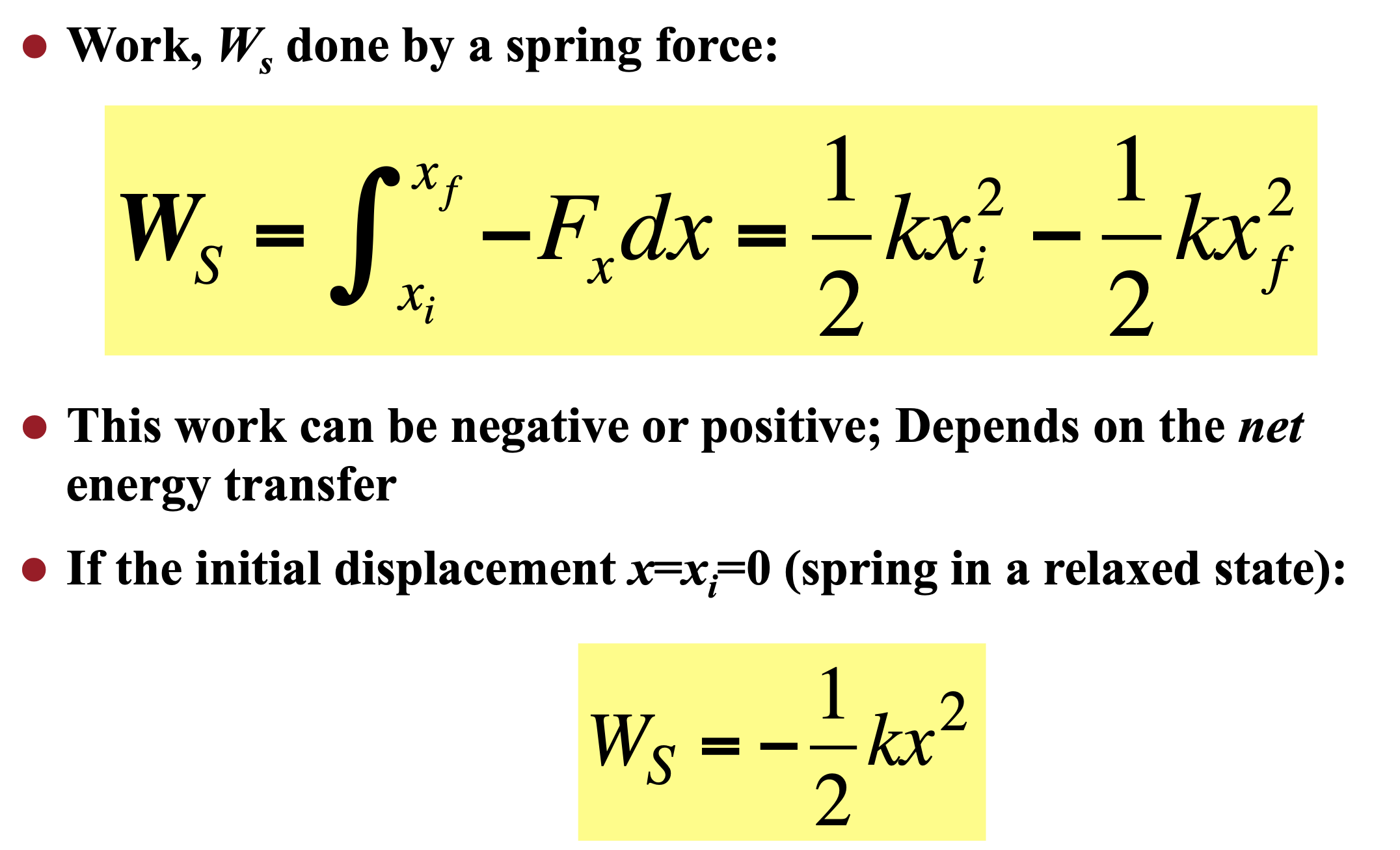
Work Done by an Arbitrary Variable Force
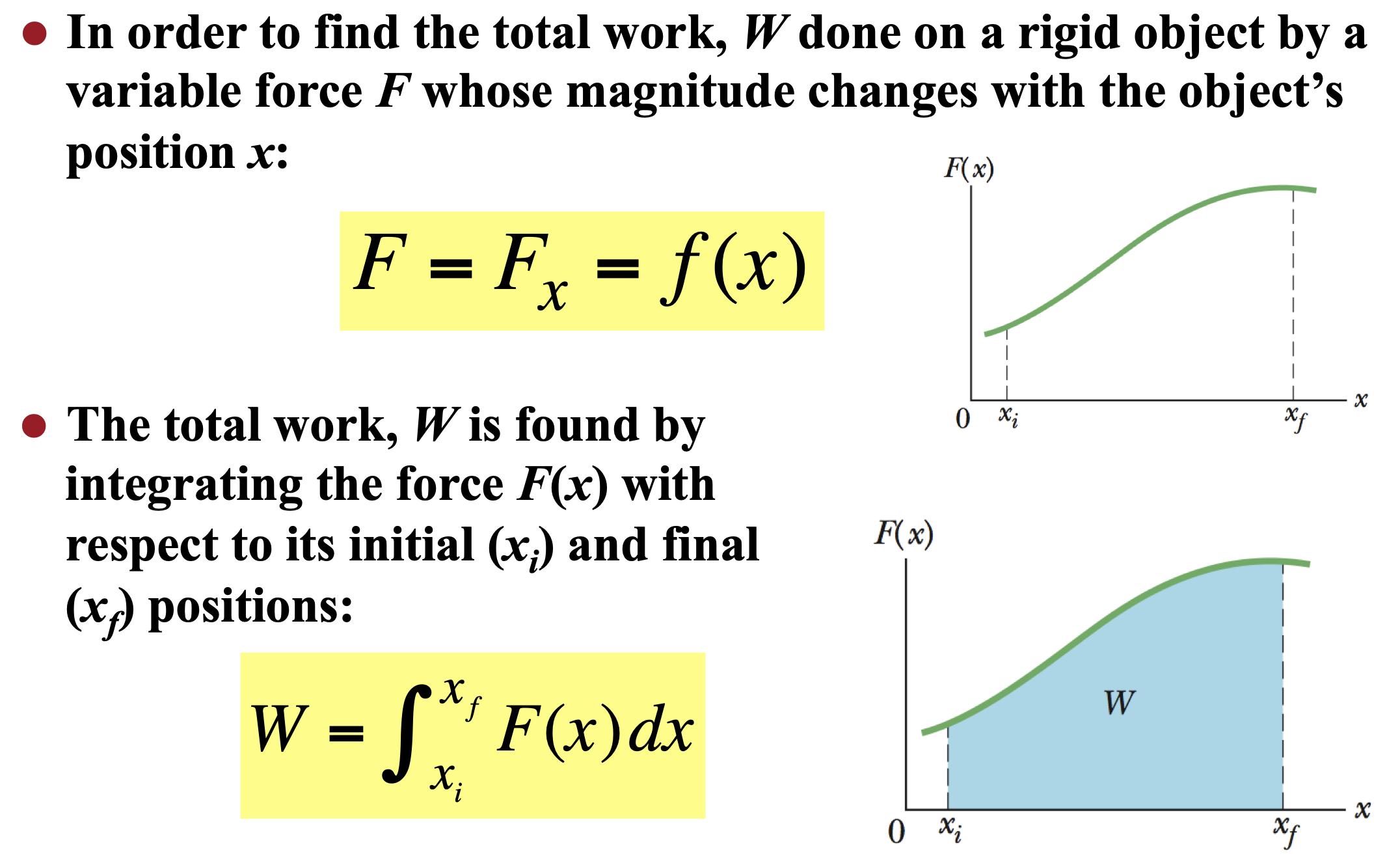
Work Done by an Arbitrary Variable Force − Kinetic Energy
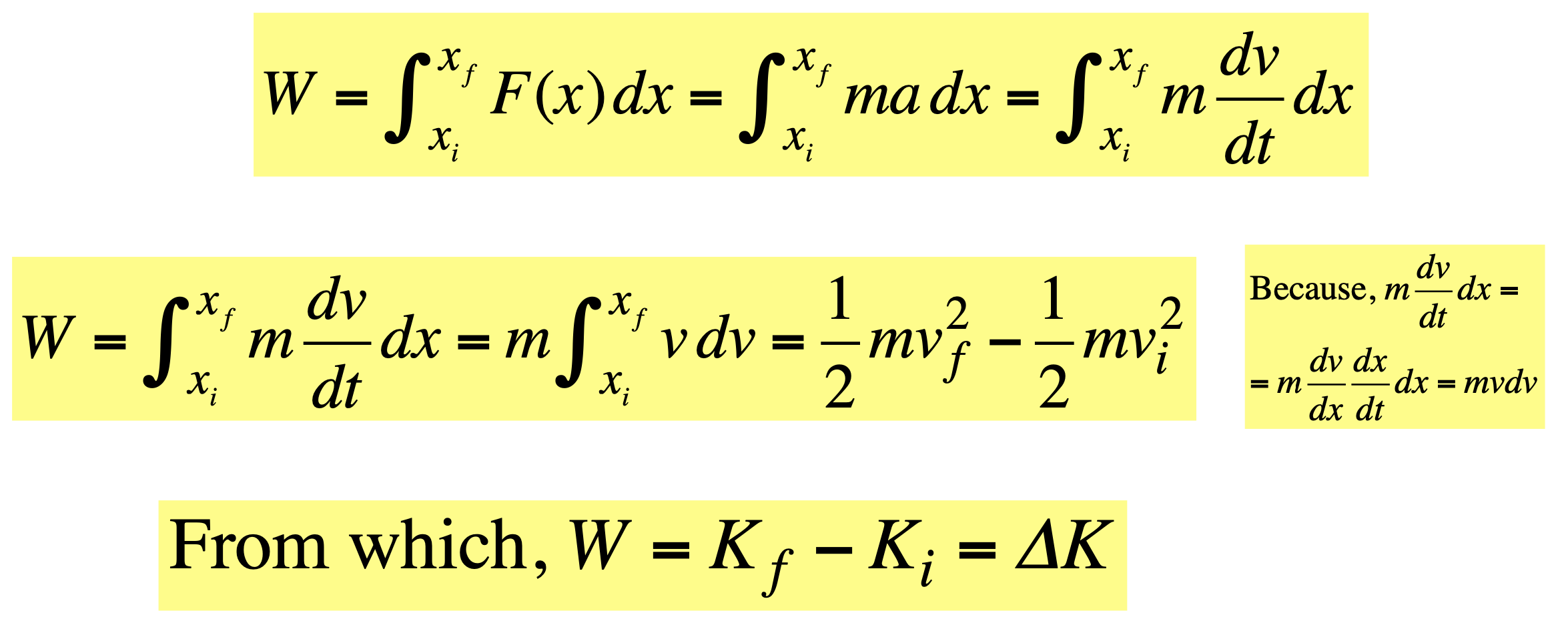
Power
P is the time rate at which work, W is done by a force, F; in other words, power is the time rate at which energy is transferred
The SI unit of power is also watt (W)
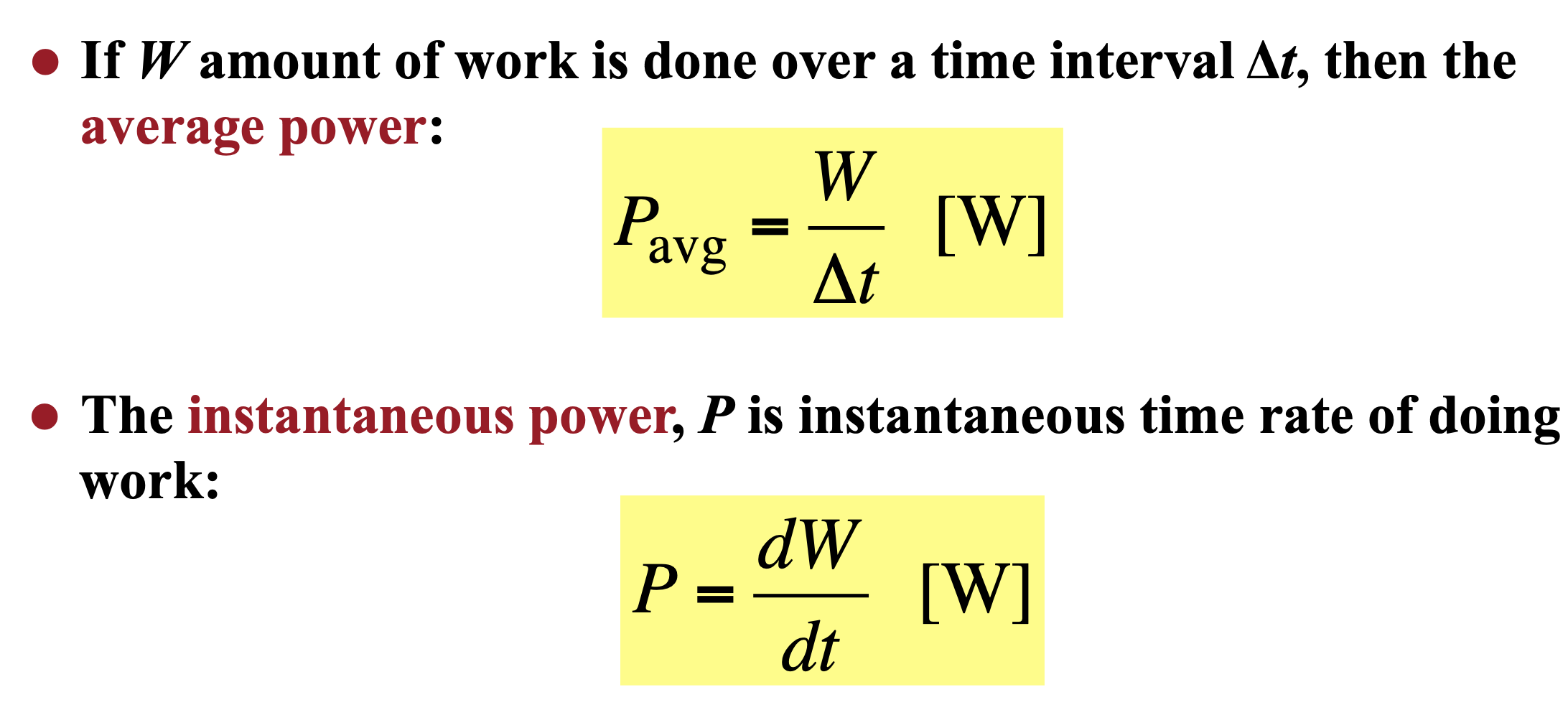
Power − Fundamental Concepts Through Work
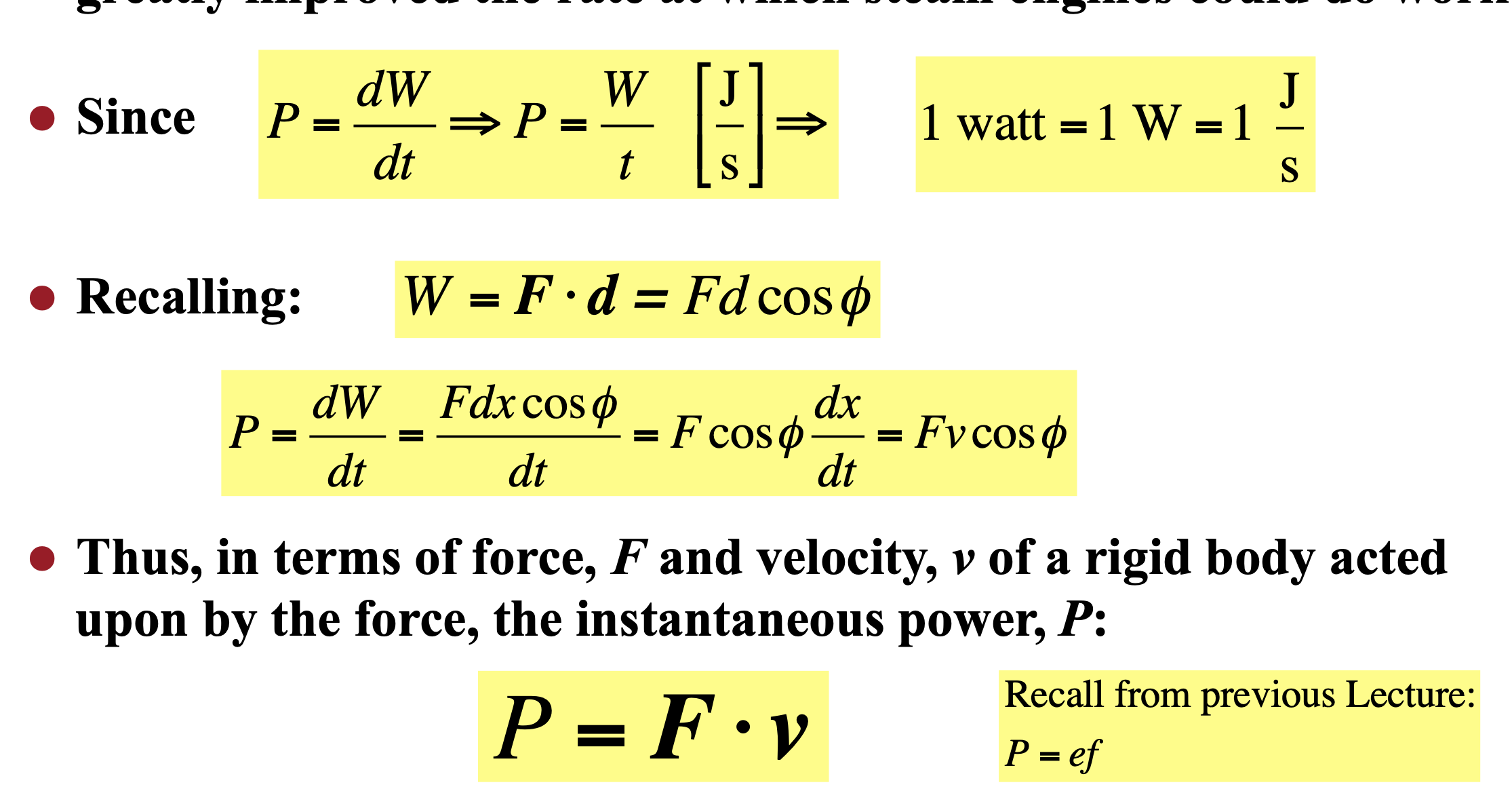
Potential Energy
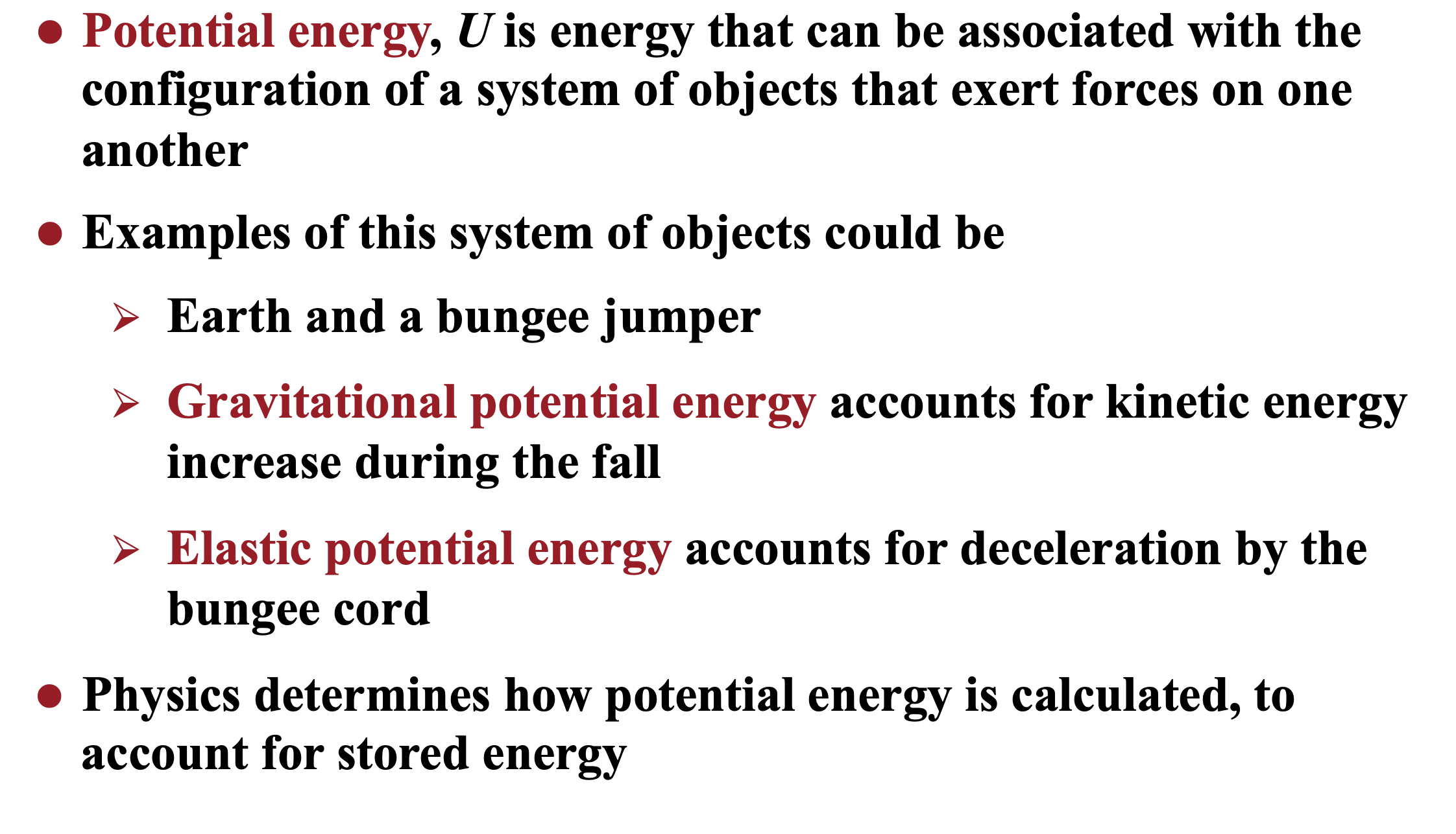
Potential Energy − Relationship With Work
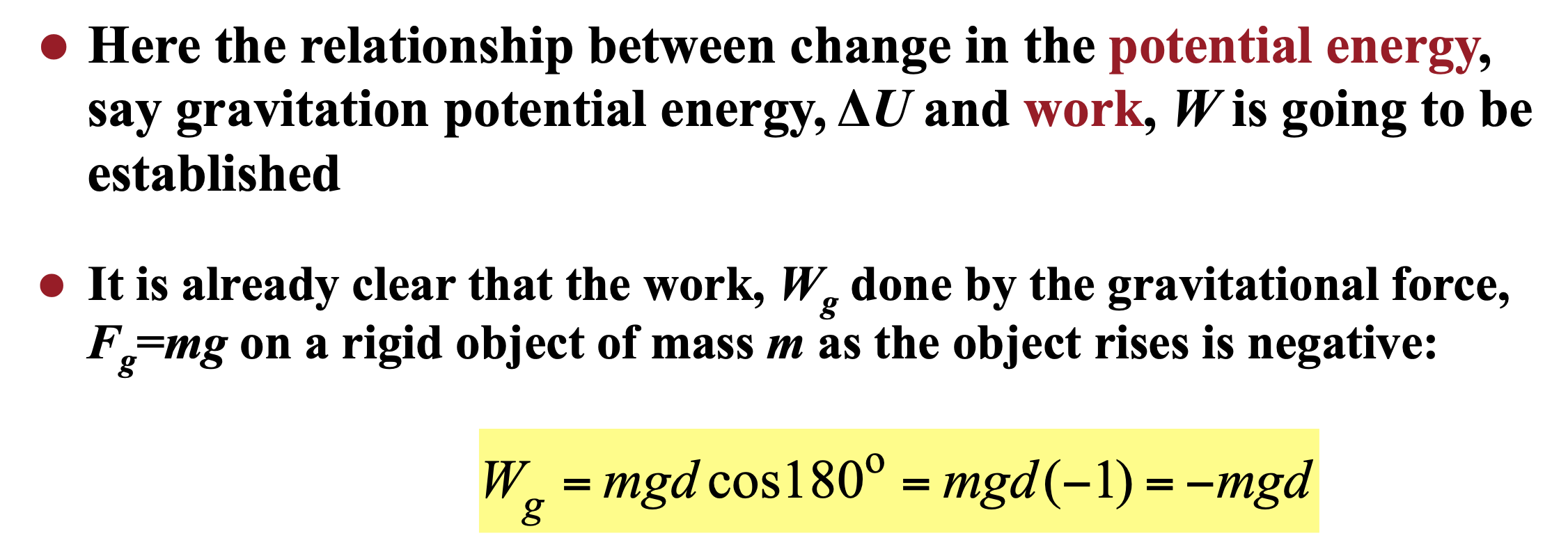
Potential Energy and Work − Summary
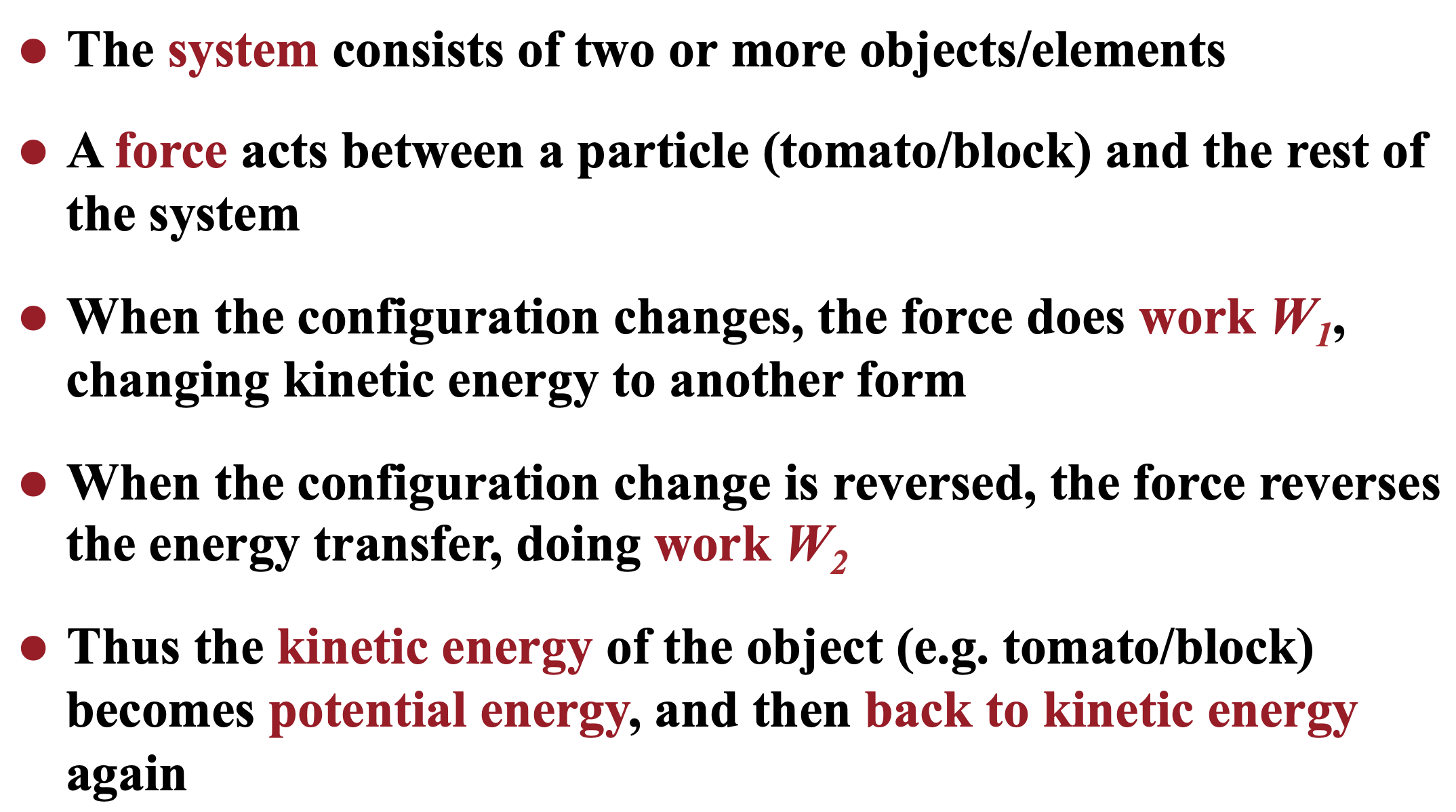
Gravitational Potential Energy − Relationship With Work
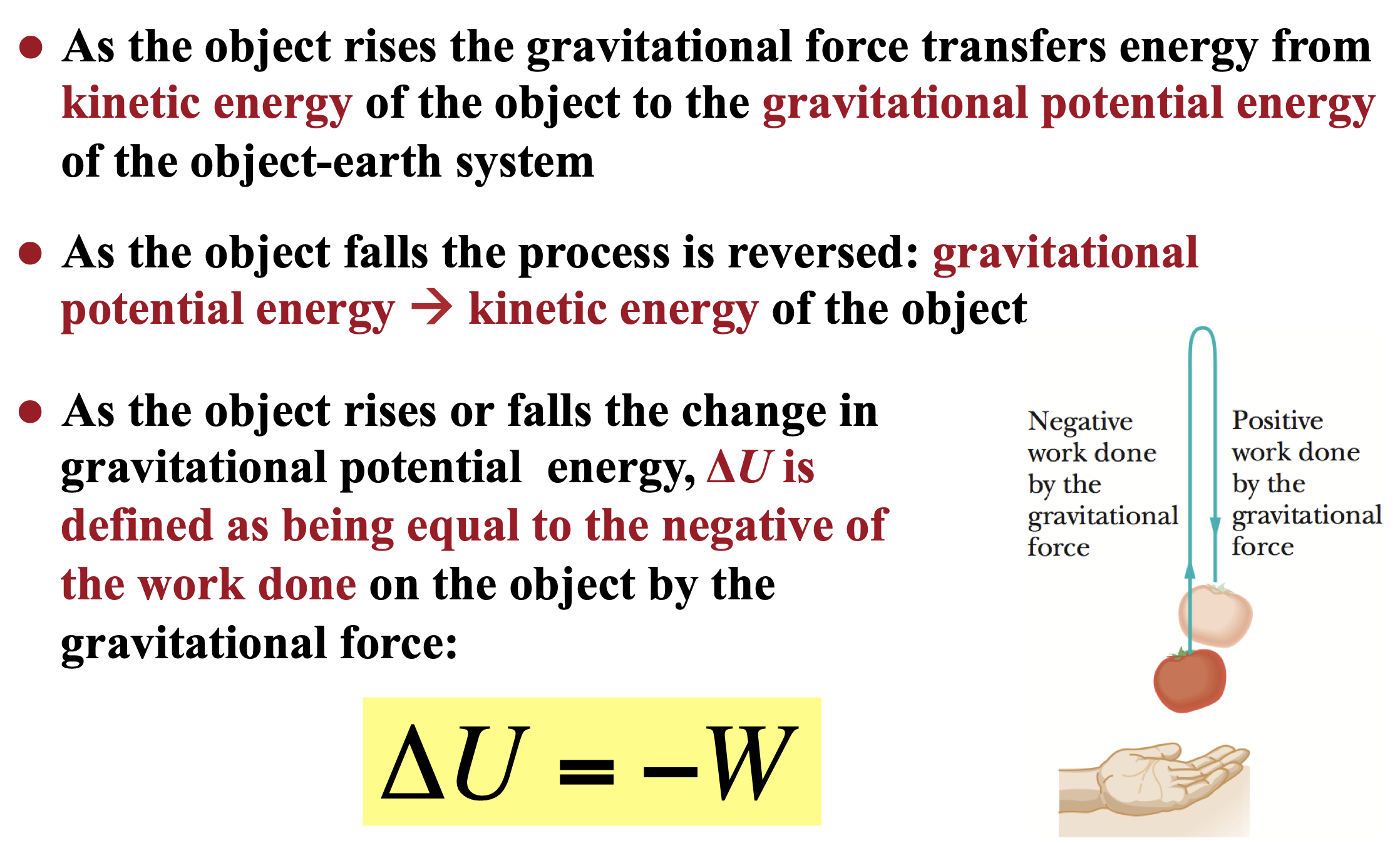
Elastic Potential Energy − Relationship With Work
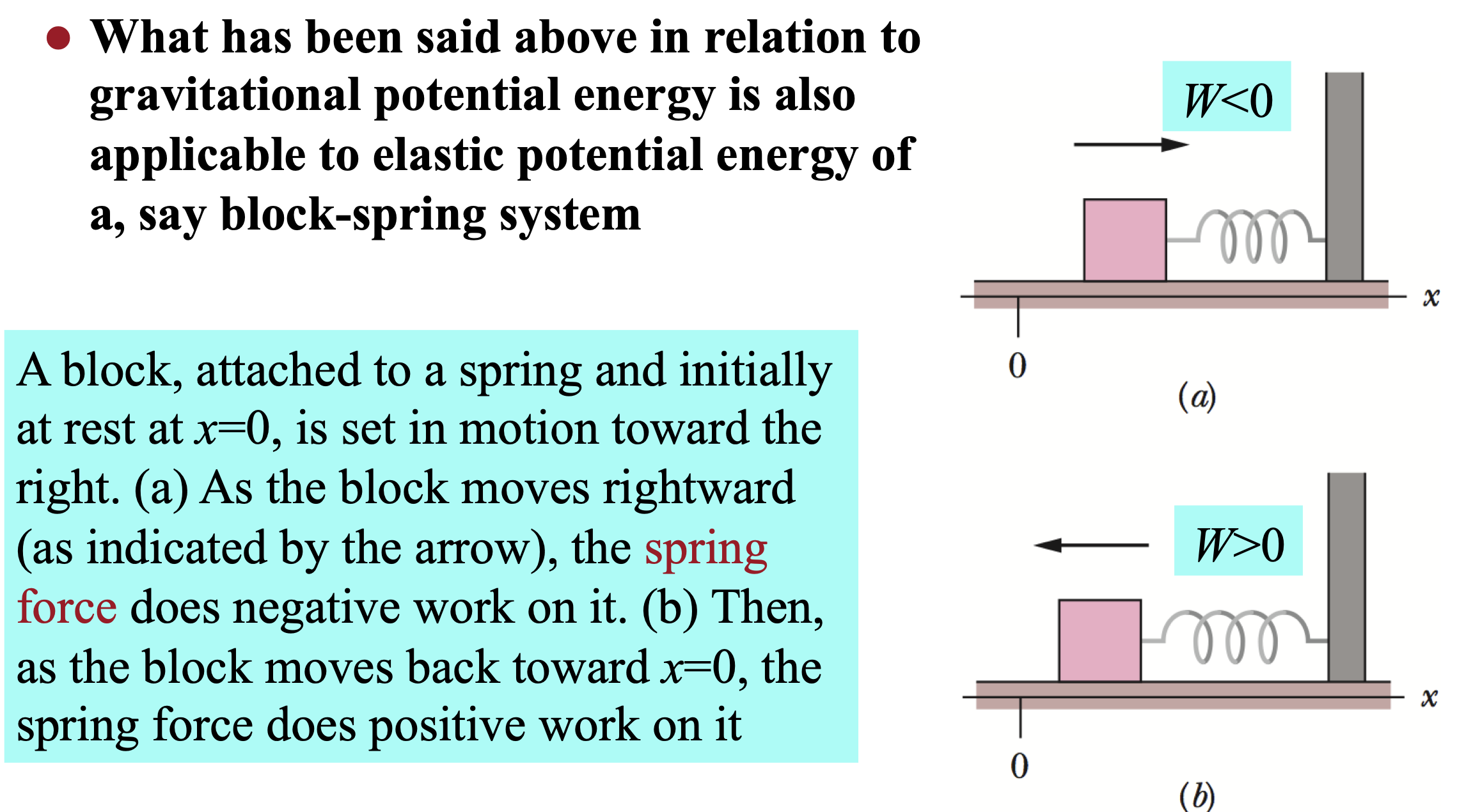
Conservative and Nonconservative Forces
Conservative forces are forces for which W1 = −W2 is always true:
Ø For example: gravitational force, spring force
Ø Otherwise one could not speak of their potential energies
Nonconservative forces are forces for which W1 ≠ −W2:
Ø For example: kinetic friction force, drag force
Ø Kinetic energy of a moving object is transferred to heat by friction
Ø Thermal energy cannot be recovered back into kinetic energy of the object via the friction force
Ø Therefore, the force is not conservative, thermal energy is not a potential energy
Conservative Forces
When only conservative forces act on an object, one can greatly simplify otherwise difficult problems involving motion of the object
The net work done by a conservative force on an object moving around any closed path is zero (b)
As a result of this, the work done by a conservative force on an object moving between two points does not depend on the path taken by the object (a)

Path independence
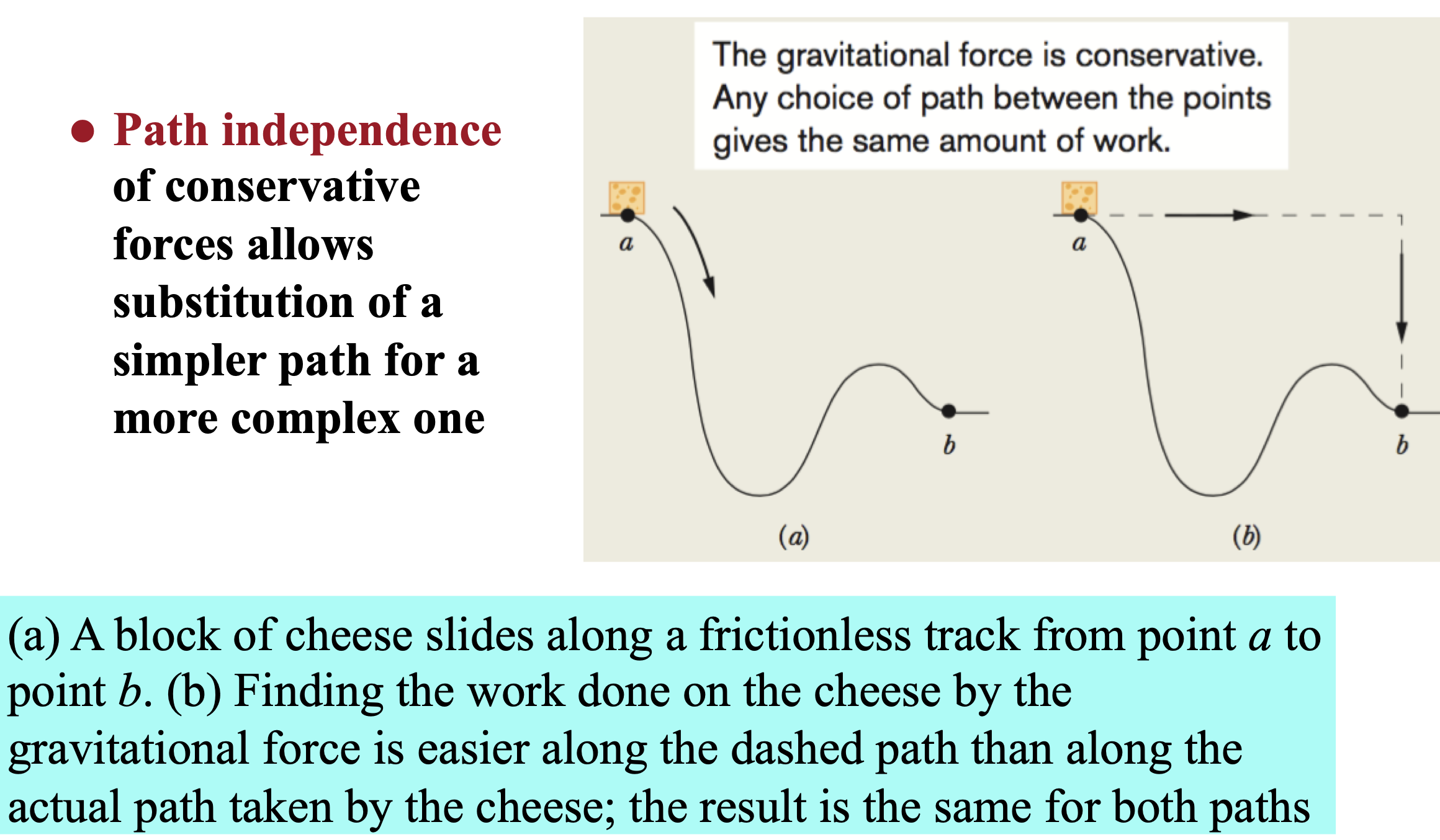
Gravitational Potential Energy − Expression
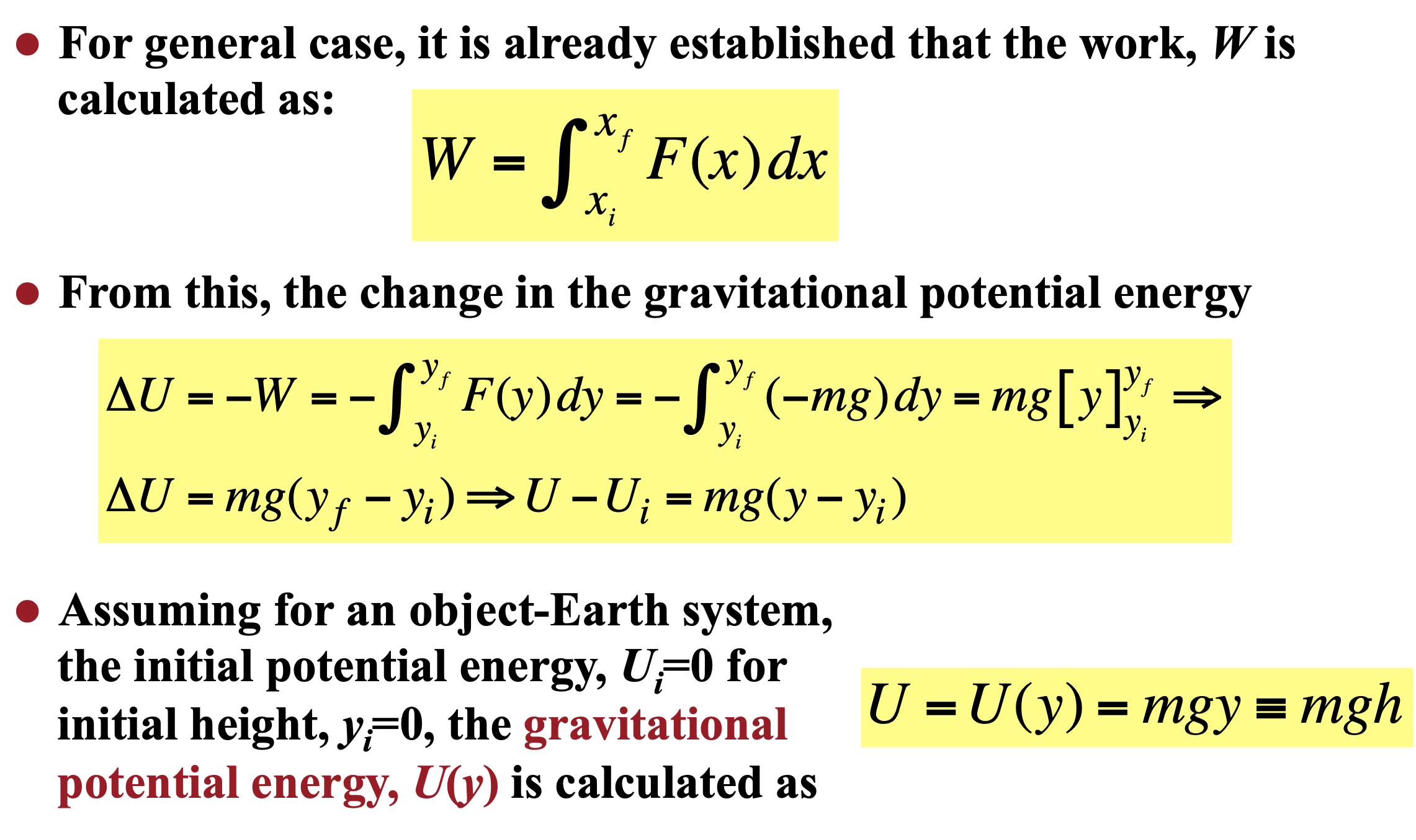
Gravitational Potential Energy − Expression
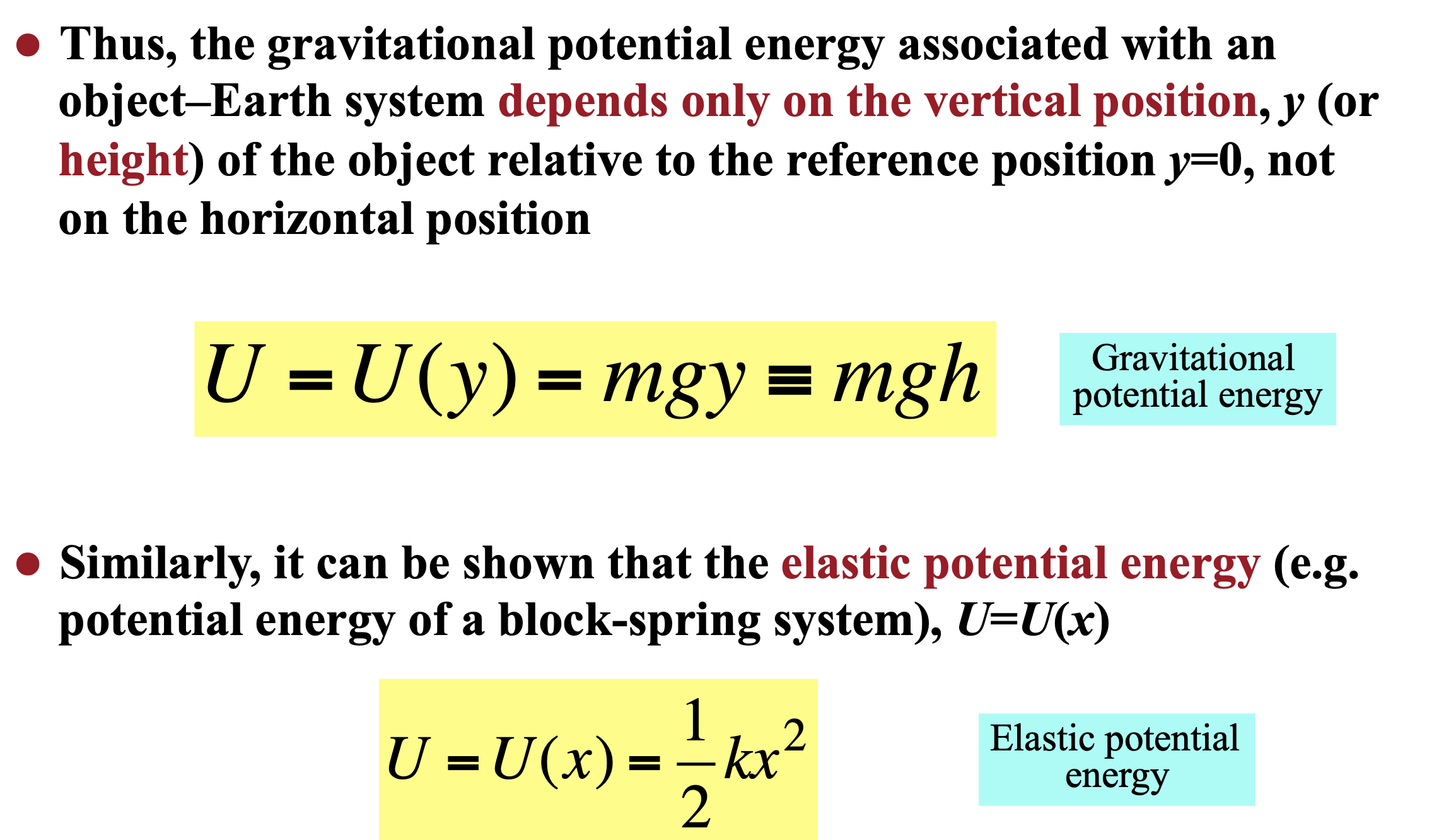
Power − Fundamental Concepts Through Energy
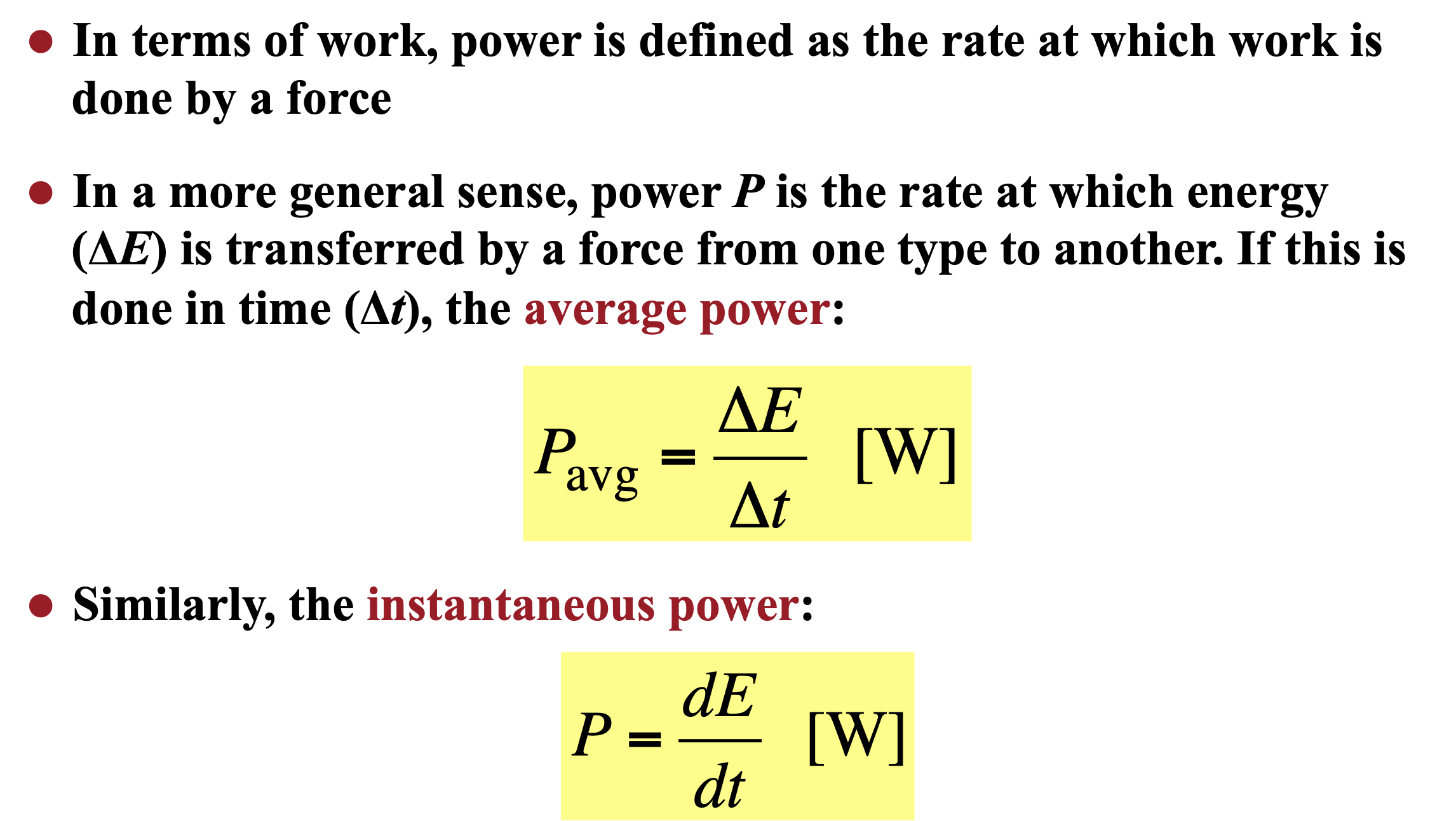
Conservation of Energy − Fundamental Concepts
Energy transferred between systems can always be accounted for
The energy obeys the law of conservation of energy which concerns:
Ø The total energy, E of a system
Ø This includes mechanical, thermal, and other internal energy
The law states: The total energy E of a system can change only by amounts of energy that are transferred to or from the system
Considering only energy transfer through work involving mechanical (Emec), thermal (Eth) and internal (Eint) energies this law states:

Conservation of Energy − Conservation of Mechanical Energy
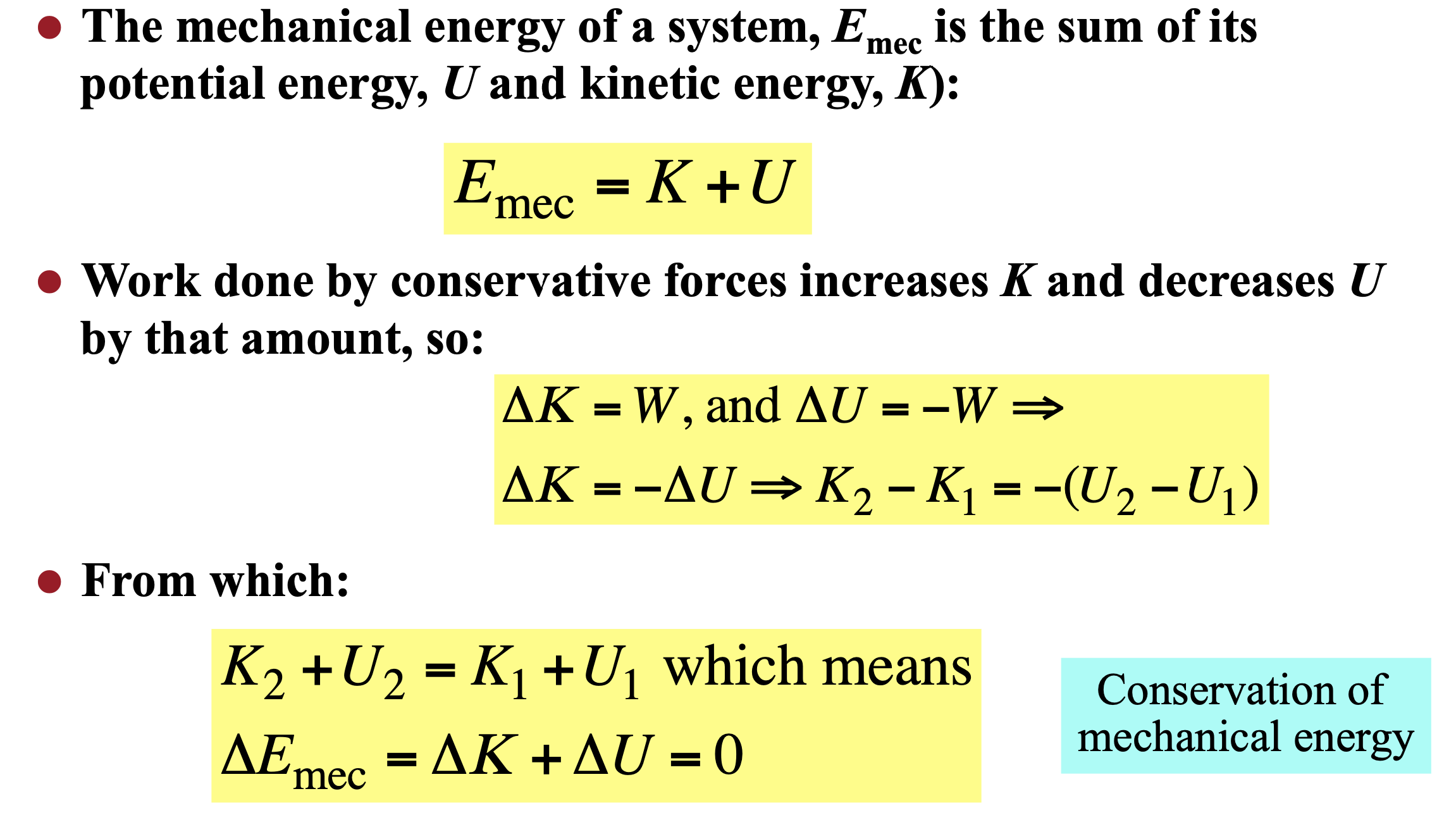
Conservation of Energy − Conservation of Mechanical Energy
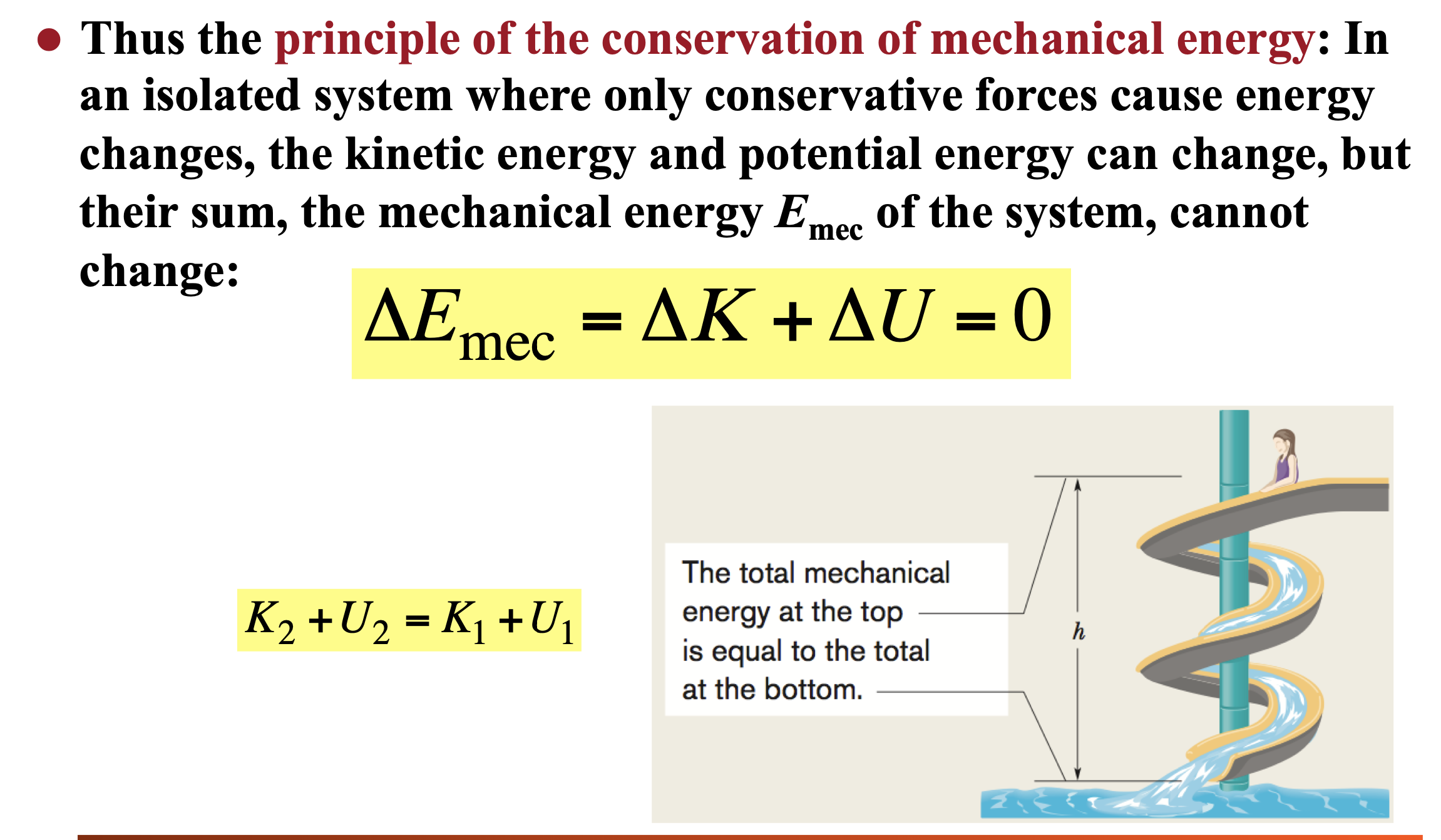
Energy, Work, Power − Summary of Key Concepts
Conservative force − a force whose net work on an object moving around any closed path, from an initial point and then back to that point, is zero. Examples: gravitational and spring forces; nonconservative force - kinetic frictional force
Potential energy − energy that is associated with the configuration of a system in which a conservative force acts
Gravitational potential energy − potential energy associated with Earth−nearby object system
Elastic potential energy − potential energy associated with the state of compression or elongation of an elastic object
Mechanical energy − sum of kinetic and potential energies of a mechanical system
Energy, Work, Power − Summary of Key Concepts
Isolated system − system in which no external force causes energy changes
Principle of conservation of mechanical energy − if only conservative forces do work within an isolated system, then the mechanical energy Emec of the system cannot change
Law of conservation of energy − the total energy E of a system can change only by amounts of energy that are transferred to or from the system
Power − power due to a force is the rate at which that force transfers energy